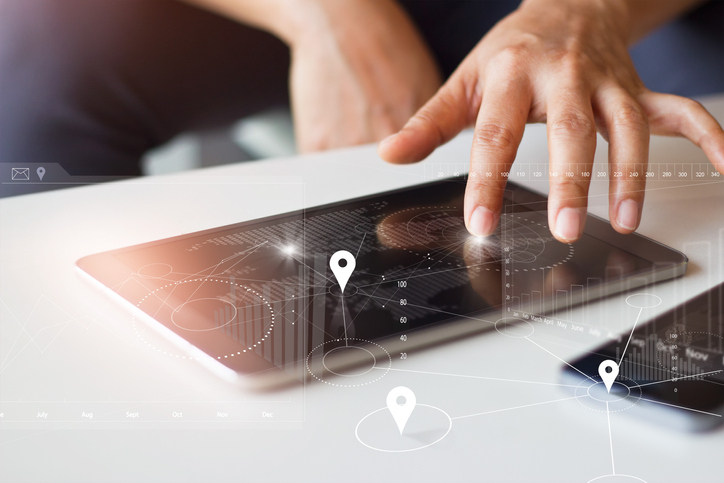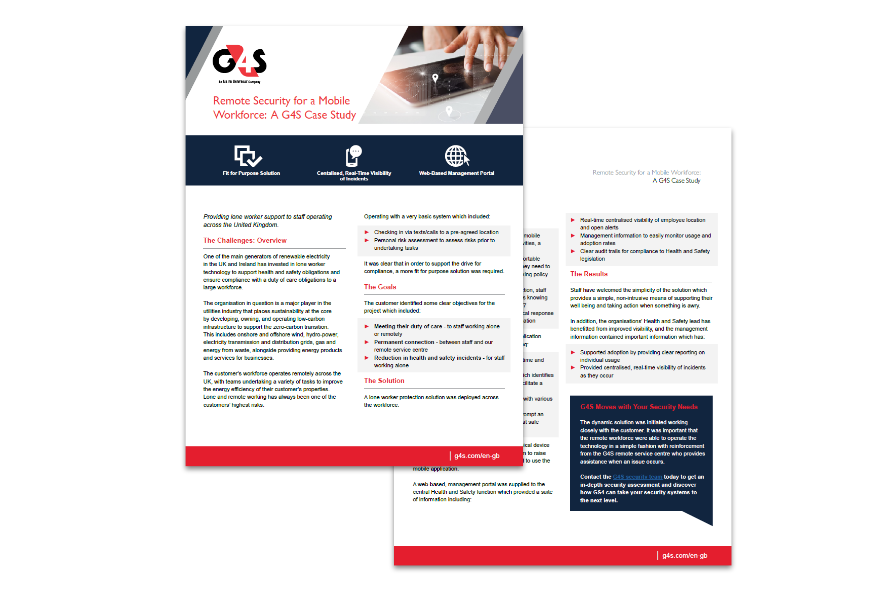Remote Security for a Mobile Workforce

THE CHALLENGES: OVERVIEW
One of the main generators of renewable electricity in the UK and Ireland has invested in lone worker technology to support health and safety obligations and ensure compliance with a duty of care obligations to a large workforce.
The organisation in question is a major player in the utilities industry that places sustainability at the core by developing, owning, and operating low-carbon infrastructure to support the zero-carbon transition. This includes onshore and offshore wind, hydro-power, electricity transmission and distribution grids, gas and energy from waste, alongside providing energy products and services for businesses.
The customer’s workforce operates remotely across the UK, with teams undertaking a variety of tasks to improve the energy efficiency of their customer’s properties. Lone and remote working has always been one of the customers’ highest risks.
Operating with a very basic system which included:
- Checking in via texts/calls to a pre-agreed location.
- Personal risk assessment to assess risks prior to undertaking tasks.
It was clear that in order to support the drive for compliance, a more fit for purpose solution was required.
THE GOALS
The customer identified some clear objectives for the project which included:
- Meeting their duty of care - to staff working alone or remotely.
- Permanent connection - between staff and our remote service centre.
- Reduction in health and safety incidents - for staff working alone.
THE SOLUTION
A lone worker protection solution was deployed across the workforce. The solution works in four distinct phases:
- Staff are equipped with their lone worker mobile phone application and, in higher risk activities, a connected bluetooth device.
- Staff are trained to ensure they feel comfortable using the solution and understand how they need to use it in line with organisation’s lone working policy requirements.
- Using a GSM or wireless Internet connection, staff can make use of proactive safety features knowing highly trained operators are available 24/7.
- When required in an emergency, a physical response is coordinated to the individual’s GPS location.
Staff were equipped with a mobile phone application which provided a host of functionality including:
- The ability to raise an SOS alarm at any time and engage with operator support.
- The ability for staff to raise a pre alert which identifies their precise location to an operator to facilitate a faster response if necessary.
- Automatic alerting in the event of a fall – with various tolerance levels.
- Setting “Time at Risk” indicators which prompt an alert if an individual hasn’t been marked at safe beyond a predefined time period.
Public facing staff were equipped with a physical device which connects via Bluetooth and allows them to raise alerts quickly and discreetly, without the need to use the mobile application. A web-based, management portal was supplied to the central Health and Safety function which provided a suite of information including:
- Real-time centralised visibility of employee location and open alerts.
- Management information to easily monitor usage and adoption rates.
- Clear audit trails for compliance to Health and Safety legislation.
THE RESULTS
Staff have welcomed the simplicity of the solution which provides a simple, non-intrusive means of supporting their well being and taking action when something is awry. In addition, the organisations’ Health and Safety lead has benefitted from improved visibility, and the management information contained important information which has:
- Supported adoption by providing clear reporting on individual usage.
- Provided centralised, real-time visibility of incidents as they occur.
DOWNLOAD THE PDF CASE STUDY
If you would like this case study in PDF, please complete the form to gain access.

